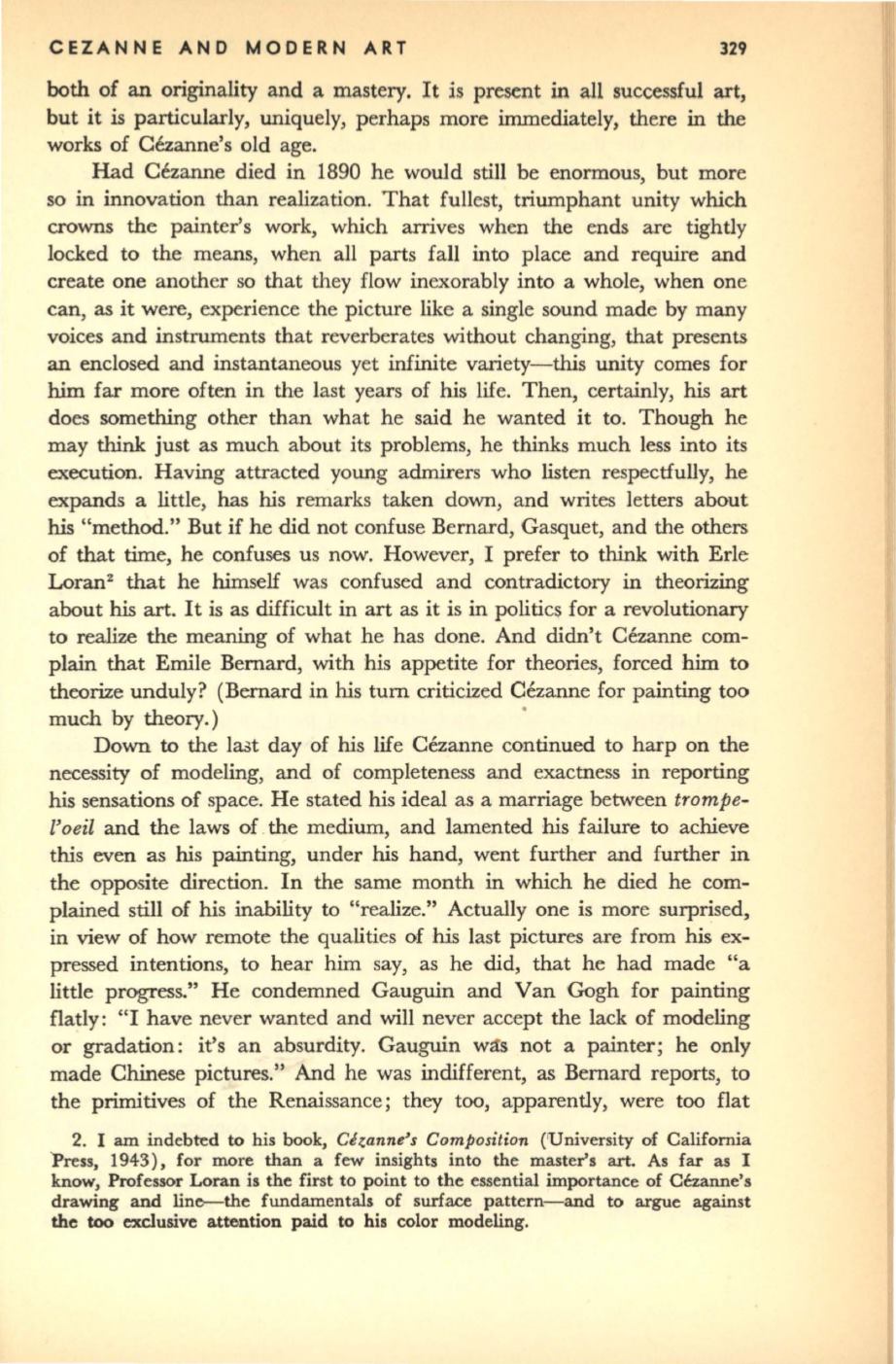
CEZANNE AND MODERN ART
329
both of an originality and a mastery. It is present in all successful art,
but it is particularly, uniquely, perhaps more inunediately, there in
the
works of Cezanne's old age.
Had Cezanne died in 1890 he would still be enormous, but more
so in innovation than realization. That fullest, triumphant unity which
crowns the painter's work, which arrives when the ends are tightly
locked to the means, when all parts fall into place and require and
create one another so that they flow inexorably into a whole, when one
can, as it were, experience the picture like a single sound made by many
voices and instruments that reverberates without changing, that presents
an enclosed and instantaneous yet infinite variety-this unity comes for
him
far more often in the last years of his life. Then, certainly, his art
does something other than what he said he wanted it to. Though he
may think just as much about its problems, he thinks much less into its
execution. Having attracted young admirers who listen respectfully, he
expands a little,
has
his remarks taken down, and writes letters about
his
"method." But if
he
did not confuse Bernard, Gasquet, and the others
of that time, he confuses us now. However, I prefer to think with Erle
Loran
2
that he himself was confused and contradictory in theorizing
about
his
art. It is as difficult in art as it is in politics for a revolutionary
to realize the meaning of what he has done. And didn't Cezanne com–
plain that Emile Bernard, with his appetite for theories, forced him to
theorize unduly? (Bernard in his turn criticized Cezanne for painting too
much by theory.)
.
Down
to
the la3t day of his life Cezanne continued to harp on the
necessity of modeling, and of completeness and exactness in reporting
his sensations of space. He stated his ideal as a marriage between
trompe–
l' oeil
and the laws of the medium, and lamented his failure to achieve
this even as his painting, under his hand, went further and further in
the opposite direction. In the same month in which he died he com–
plained still of his inability
to
"realize." Actually one is more surprised,
in view of how remote the qualities of his last pictures are from his ex–
pressed intentions, to hear him say, as he did, that he had made "a
little progress." He condemned Gauguin and Van Gogh for painting
flatly: "I have never wanted and will never accept the lack of modeling
or gradation: it's an absurdity. Gauguin wets not a painter; he only
made Chinese pictures." And he was indifferent, as Bernard reports, to
the primitives of the Renaissance; they too, apparently, were too flat
2. I am indebted to his book,
Ce{.anne's Composition
(University of California
"Press, 1943), for more than a few insights into the master's
art.
As far as I
know, Professor Loran is the first to point
to
the essential importance of Cezanne's
drawing
and
lin~the
fundamentals of surface pattern-and to argue against
the
too
exclusive attention paid to his color modeling.


